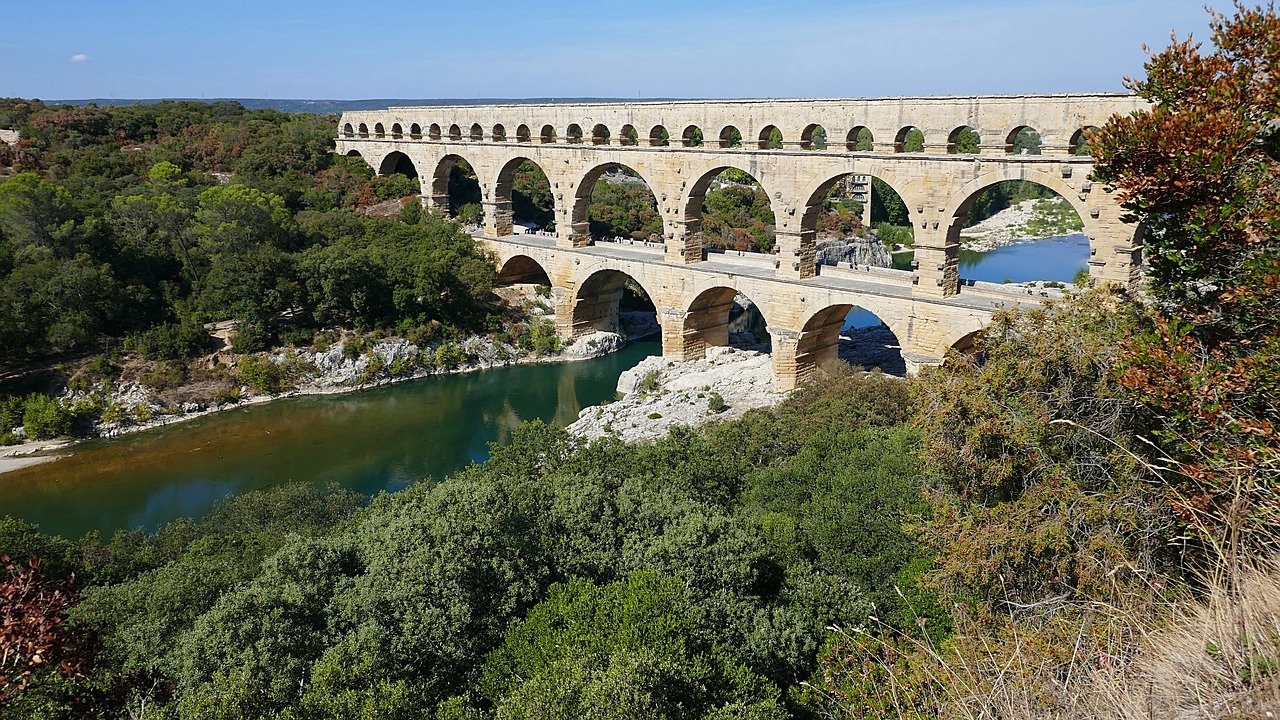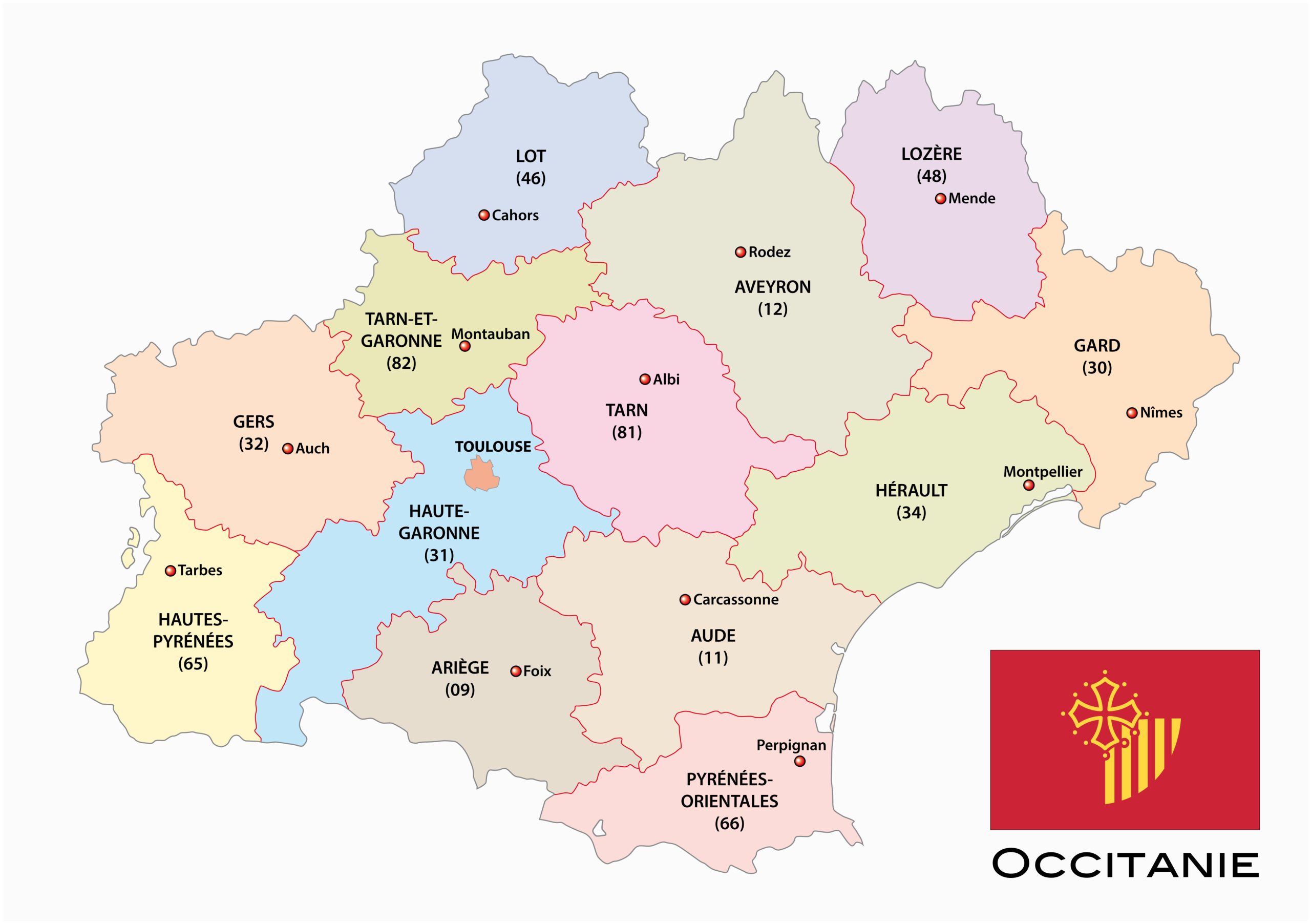La Règion OCCITANIE
La Région Occitanie has much to offer francophile visitors who wish to discover France.A glorious and diverse landscape, heaped with history, heritage, heroes and heroines. Sophisticated cities and peaceful country villages. Varied and distinct wines. Unique regional food, restaurants and accommodation. Charming and inspiring cultural events. Stirring or calming leisure activities.But most of all the people who live and work there understand L’art de vivre à la française.
La région Occitanie comprend treize départements:Ariège (09), Aude (11), Aveyron (12), Gard (30), Haute-Garonne (31), Gers (32), Hérault (34), Lot (46), Lozère (48), Hautes-Pyrénées (65), Pyrénées-Orientales (66), Tarn (81), Tarn-et-Garonne (82).
The creation of the the region in 2014 merged the Languedoc-Rousillon and Midi-Pyrénées regions.
Regional Languages:
Occitània ou Óucitanìo in Occitan or langue d’oc , lenga d’òc spoken in the southern third of France, the Occitan Valleys (Piedmont and Liguria) and Guardia Piemontese (Calabria) in Italy, Val d’Aran (Catalonia) in Spain and Monaco. The linguistic and cultural area of Occitan is called Occitania or Pays d’Oc.Catalan is also considered a regional language.
It is the second-largest region of France Métropolitaine behind Nouvelle-Aquitaine and its capital and largest city is Toulouse.
Occitanie is bordered by three regions Nouvelle-Aquitaine, Auvergne-Rhône-Alpes and Provence-Alpes-Côte d’Azur. Two countries, Spain and

Andorra, border the south of the region. Framed by two mountain ranges: the Massif Central to the North and the Pyrenees on the Spanish border, which boasts the highest point in the French Pyrenees – the summit of Vignemale, which rises to 3,298 metres.
The Mediterranean coastline runs along four departments from the Pyrénées-Orientales through Aude and Herault to Gard. In the west, Occitanie stretches along the Garonne river valley, surrounded by high plains and sweeping hillsides. To the East, the Rhône and a portion of its delta, the Camargue, form the border with La région Provence Alpes Côte D’Azur.
The Naurouze Weir (Lauragais Weir), which forms the highest point of the Midi Canal, is a watershed that links the Mediterranean and the Atlantic via its extension through the Garonne Canal.
Languedoc-Rousillon
The Languedoc-Roussillon region comprises five departments: Aude, Gard, Hérault, Lozère and Pyrénées-Orientales. Its capital is Montpellier, which is also the capital of Hérault which has two district capitals, Béziers and Lodève.
The department of Aude has Carcassonne as its capital and Limoux and Narbonne as its district capitals.
The Gard department, whose capital is Nîmes, has two district capitals: Alès and Le Vigan.
The department of Lozère has Mende as its capital and Florac as its only district capital.
Finally, the Pyrénées-Orientales have Perpignan as their capital and Céret and Prades as district capitals.
Midi-Pyrénées
The Midi-Pyrénées region has eight departments: Ariège, Aveyron, Haute-Garonne, Gers, Lot, Hautes-Pyrénées, Tarn and Tarn-et-Garonne. Its capital is Toulouse, which is also the capital of the department of Haute-Garonne which has two district capitals Muret et Saint-Gaudens.
The department of Ariège has Foix as its capital and Pamiers et Saint-Girons as its district capitals.
The department of Aveyron has Rodez as its capital and Millau et Villefranche-de-Rouergue as its district capitals.
The department of Gers has Auch as its capital and Condom and Mirande as its district capitals.
The department of Lot has Cahors as its capital and Figeac et Gourdon as its district capitals.
The department of Hautes-Pyrénées has Tarbes as its capital and Argelès-Gazost and Bagnères-de-Bigorre as its district capitals.
The department of Tarn has Albi as its capital and Castres as its district capital.
The department of Tarn-et-Garonne has Montauban as its capital and Castelsarrasin as its district capital.







